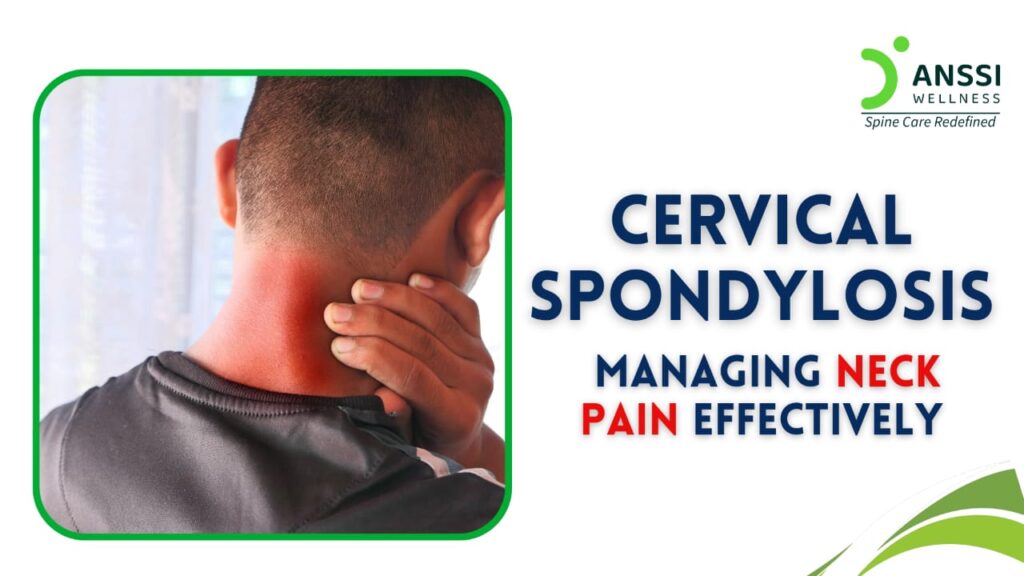Cervical spondylosis, or arthritis of the neck, is a common degenerative condition affecting the spinal discs and joints in the cervical spine. It typically results from age-related wear and tear, but its symptoms can range from mild discomfort to debilitating pain.
If you are someone who is suffering from cervical spondylosis, learning about its different symptoms and the available treatment options can help you manage the condition effectively.
Symptoms of Cervical Spondylosis
Any of the following symptoms may appear.
- Neck Pain and Stiffness: Persistent pain and stiffness in the neck, especially after periods of inactivity, are primary symptoms.
- Headaches: Pain originating at the base of the skull may radiate to the forehead and temples, contributing to tension headaches.
- Radiating Pain: Tingling, numbness, or pain often spreads to the shoulders, arms, and hands, usually when the spinal nerves are compressed.
- Reduced Mobility: Stiffness and discomfort can limit the neck’s range of motion, affecting day-to-day activities. Clicking, grinding, or popping noise can be heard when moving the neck.
- Weakness: Muscle weakness in the arms and hands can make it difficult to grip or hold objects.
Preventing Cervical Spondylosis
Preventive measures include maintaining an active lifestyle, avoiding prolonged sedentary activities, and practising proper neck posture. Regular exercise, a balanced diet, and hydration also contribute to spinal health.
When to Seek Medical Help
If symptoms persist or worsen despite self-care efforts, consult a healthcare professional. Persistent pain, significant stiffness, or neurological symptoms such as numbness, weakness, dizziness, and absence of coordination, may require advanced treatments or diagnostic imaging to assess the condition.
By incorporating proper strategies, individuals with cervical spondylosis can lead comfortable, active lives and minimise the impact of this common condition.
Managing Cervical Spondylosis
Proper management of cervical spondylosis can significantly improve the quality of your life. The key strategies that you should apply include:
Ergonomic Adjustments
Maintaining proper posture during work or sleep reduces strain on the neck. Using supportive pillows and chairs helps alleviate symptoms.
Exercise and Stretching
Gentle neck stretches and strengthening exercises prescribed by a physical therapist can improve flexibility and reduce stiffness.
Non-Surgical Spinal Decompression
Non-surgical spinal decompression is a non-invasive treatment that gently stretches the spine, reducing pressure on compressed discs and nerves. By creating negative pressure, spinal decompression helps reposition displaced discs, alleviate pain, and promote healing.
Unlike surgical options, spinal decompression is pain-free, involves no recovery downtime, and targets the root cause of discomfort. It is particularly effective for individuals experiencing radiating pain, stiffness, and nerve compression.
About ANSSI:
ANSSI Wellness focuses on improving the quality of life for patients suffering from spinal issues, aiming to provide relief where other conventional treatments have failed. Through advanced non-surgical spinal decompression treatment, ANSSI is committed to helping patients avoid surgery and recover in a safe, effective, and compassionate environment.



